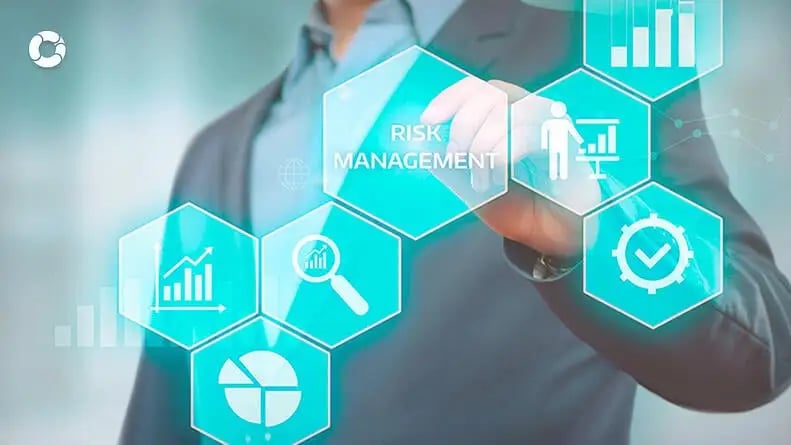The Function and Importance of Risk Management in Ensuring Organizational Continuity
The Function and Importance of Risk Management in Ensuring Organizational Continuity
Blog Article
Checking out the Importance of Risk Management for Effective Decision-Making Approaches
In the complex globe of organization, Risk Management becomes a vital element in the decision-making procedure. The capability to recognize prospective hazards and opportunities, and plan accordingly, can mean the distinction between success and failure. With devices such as SWOT and PESTEL, companies are equipped to make educated selections, fostering strength and versatility in an ever-changing setting. Wondering how this works? Let's unbox the characteristics even more.
Understanding the Idea of Risk Management
Risk Management, a vital component in decision-making, is usually misinterpreted or oversimplified. Risk Management involves self-displined and structured strategies, utilizing information and insightful evaluations. From economic uncertainties, lawful liabilities, tactical Management errors, to accidents and natural calamities, it resolves numerous risks - importance of risk management.
The Function of Risk Management in Decision-Making Processes
In the realm of critical preparation and company procedures, Risk Management plays an integral duty in decision-making processes. It helps in recognizing prospective dangers and uncertainties that could influence the achievement of company goals. By mapping these risks, companies can develop approaches to mitigate their effect, making sure organization continuity and stability. Risk Management hence ends up being a crucial device in decision-making, helping leaders to make informed options based upon an extensive understanding of the risks entailed. It encourages a proactive method, allowing companies to prepare and anticipate for possible future situations. This significantly reduces the possibility of unfavorable repercussions, advertising a lot more reliable and reliable decision-making techniques. For that reason, Risk Management works as an important element in the decision-making procedures of any type of organization.

How Risk Management Improves Strategic Planning
In the context of calculated preparation, Risk Management plays a crucial function. Initiating with the recognition of potential dangers, it even more reaches the implementation of Risk reduction measures. The duty of Risk Management is vibrant but not fixed, as it demands constant surveillance and adjusting of strategies.
Identifying Possible Dangers

Applying Risk Reduction
Having developed the significance of recognizing potential dangers, the next action is to explore Risk reduction. This process entails creating and applying methods to take care of recognized threats properly. It is a critical element of tactical planning as it boosts decision-making by minimizing potential unfavorable end results. Risk mitigation techniques can vary from Risk evasion, Risk transfer, to risk reduction. Each strategy ought to be customized to the details Risk, considering its prospective impact and the company's Risk resistance. Moreover, efficient Risk mitigation This Site requires a deep understanding of the Risk landscape and the possible effect of each Risk. This understanding allows companies to focus on risks and allot resources successfully, making sure that the most substantial threats are addressed initially.
Tracking and Readjusting Techniques
Though Risk mitigation is a critical action in strategic planning, constant monitoring and modification of these strategies is similarly crucial. It additionally provides a possibility to evaluate the success of the Risk Management measures, enabling adjustments to be made where required, further improving tactical planning. Surveillance and changing Risk Management strategies is a vital element for improving an organization's strength and calculated planning.
Case Studies: Effective Risk Management and Decision-Making
In the globe of business and money, successful Risk Management and decision-making frequently serve as the pillars of prosperous enterprises. These cases highlight the value of astute Risk Management in decision-making procedures. These situations underscore the important role of Risk Management in calculated decision-making.
Tools and Strategies for Reliable Risk Management
Navigating the detailed labyrinth of Risk Management calls for the best collection of tools and methods. These devices, such as Risk registers and warm maps, help in identifying and analyzing prospective dangers. Strategies consist of both measurable methods, like level of sensitivity evaluation, and qualitative techniques, such as SWOT evaluation. These aid in prioritizing risks based on their possible effect and possibility. Risk response methods, Full Article a crucial element of Risk Management, involve accepting, preventing, moving, or mitigating threats. Surveillance and regulating threats, through routine audits and evaluations, make certain that the strategies remain effective. With these methods and devices, decision-makers can browse the facility landscape of Risk Management, therefore assisting in educated and effective decision-making.
Future Trends in Risk Management and Decision-Making Strategies
As we discover the substantial landscape of Risk Management, it ends up being noticeable that the tools and methods utilized today will proceed to advance. Future patterns direct towards an enhanced reliance on modern technology, with fabricated knowledge and device knowing playing considerable roles. These innovations will allow organizations to anticipate potential dangers with higher accuracy and make even more educated choices. In addition, there will certainly be an expanding focus on resilience, not just in managing dangers but also in getting better from negative circumstances. Finally, the principle of Risk society, where every participant of an organization understands and associated with Risk Management, will obtain extra prestige. These patterns herald an even more positive and inclusive strategy in the direction of Risk Management and decision-making.
Final thought

Risk Management hence becomes a vital tool in decision-making, aiding leaders to make enlightened selections based on a comprehensive understanding of the dangers included. Risk reduction approaches can vary from Risk avoidance, Risk transfer, to take the chance of decrease (importance of risk management). Reliable Risk mitigation needs a deep understanding of the Risk landscape and the potential impact of each Risk. Risk action strategies, a key component of Risk Management, entail approving, preventing, moving, or mitigating threats. The idea of Risk society, where every participant of a company is mindful and entailed in Risk Management, will acquire a lot more prestige
Report this page